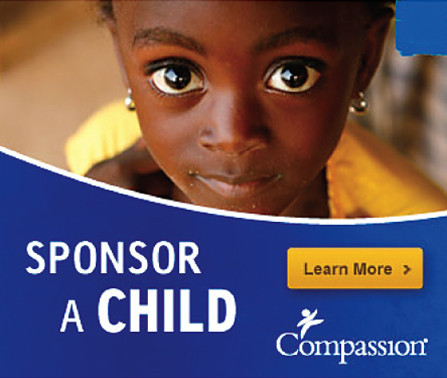 A study of one child sponsorship organization shows that the sponsor model can yield positive long-term results. (Image courtesy of Compassion International)
A study of one child sponsorship organization shows that the sponsor model can yield positive long-term results. (Image courtesy of Compassion International)
A young couple in Uganda, when asked if they would like to enter their newborn into a child sponsorship program—a program similar to the one that helped both of them get through school and into good jobs—said no. “Poverty ended with us,” they explained.
International child sponsorship programs collectively raise more than $3 billion per year. Those photos of developing world kids that get pasted to so many refrigerator doors in the developed world clearly help large aid organizations to raise funds. But do the the kids actually benefit from the money donated? Some researchers have now tracked many of these children into adulthood, and the answer—at least for one child sponsorship organization—is yes. “The impacts that we find on secondary school completion and on employment are fairly remarkable,” says Bruce Wydick, a professor of economics and international studies at the University of San Francisco. “We did the study in six countries, and in all six countries we find positive impacts from sponsorship.”
Wydick and colleagues followed more than 10,000 adults in Bolivia, Guatemala, India, Kenya, the Philippines, and Uganda. The adults who had received charitable sponsorship as children are one-third more likely to have finished high school, and on average they complete more than a year of additional education. They are also 35 percent more likely to have a white-collar job.
“It’s probably the impact evaluation that most changed my mind about things,” says David McKenzie, lead economist in the World Bank’s research department. The impact in this case is especially notable, he says, “given the lack of results of many other development interventions that have been darlings of the aid world.”
The results of this study don’t necessarily apply to all child sponsorship programs. Wydick and his colleagues contacted many sponsorship organizations, but only one—Compassion International—was willing to participate in the study. Compassion International is a child-focused church-based organization that follows a pure sponsorship model: Instead of using sponsor donations to build village-level public goods like a road or a school, it directs benefits to individual children. Compassion, moreover, attends not only to children’s need for meals, immunizations, and tutoring support, but also to their emotional, spiritual, and social development. In that way, the Compassion program instills a sense of hope.
And hope, as Wydick has discovered in follow-up studies, may be crucial to the program’s positive outcomes. “If you only gave hope to kids without giving them some basis for hope, that probably wouldn’t work very well,” he says. “But if you only did things like provide school tuition and uniforms for kids, without increasing the level of aspirations, they might not believe that they’re actually capable of greater levels of education and better employment than their parents.”
The Compassion program is relatively expensive, but it has a lasting impact—especially on certain groups of people. “If you want to do a really good thing in the world, sponsor a girl in sub-Saharan Africa through an organization that uses a pure sponsorship model,” says Wydick. “And if you want to do something great in the world, sponsor 10 [girls].”
Support SSIR’s coverage of cross-sector solutions to global challenges.
Help us further the reach of innovative ideas. Donate today.
Read more stories by Jessica Ruvinsky.

